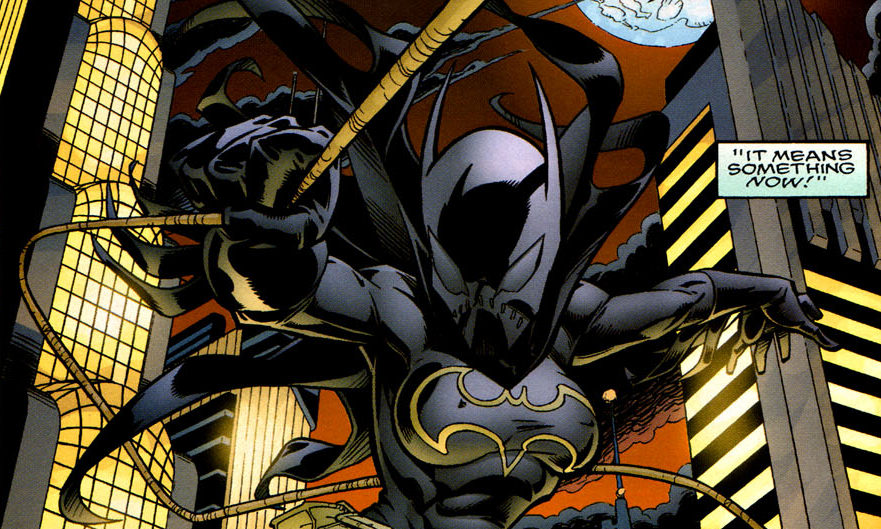
Last week, Marvel blew the lid off the Internet when they announced two major changes to beloved Avengers heroes, both of them clearly a nod to fans demanding increased comic book diversity.
Just over eight days ago, Marvel allowed The View, a day-time talk-show with an overwhelmingly female audience, to break the news that Thor — the Asgardian Thunder God played by Chris Hemsworth in the Marvel Studios movie franchise — will now be a woman. Although the details of the storyline is unclear, in an upcoming arc, Thor will presumably no longer be able to wield Mjolnir (the hammer that serves as the symbol of his power); instead, a female peer will take up Mjolnir and adopt the name of Thor. Although fan reception was largely positive, many fans were perplexed at the news since — as my friend Will pointed out — Thor is not a title like “Superman” or “Batman”, but the character’s actual name.
Then, just a few days later, Marvel Chief Creative Officer Joe Quesada appeared on Colbert Report to announce a major storyline shift involving the launch of a new title All-New Captain America: long-time sidekick Sam Wilson (aka The Falcon, played by Anthony Mackie in the most recent Winter Soldier installment of the Captain America movie franchise) will become the new Captain America, making him a contemporary African American Captain America, and the second African American Captain America in history.
Response to Blaptain America (credit to Will for that name) has been largely mixed, possibly because the timing of the announcement immediately after the announcement over Thor, along with the clear “where’s our pat on the back for our diversity initiative?” tone coming out of Marvel, has led many to conclude it’s all gimmick and publicity stunt. Like Snoopy Jenkins and Will (who podcasted about it over the weekend — go watch!), I have no particular love for superficial diversity that fails to challenge the inherent failings of the superhero genre; last week’s announcements seem like yet another skin-deep comic book diversity initiative that focuses on the appearance of diversity for its own sake.
But beyond that, I have some specific issues with the tactic here. I have specific issues with what I’m dubbing “Cowl Rental”.
First of all, there have been Captain Americas of color before, so Blaptain America is nothing really new.
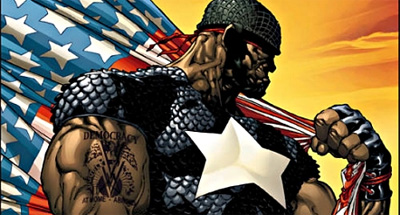
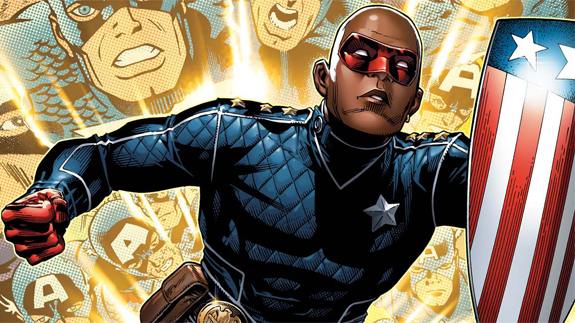
Second, it is all a sensational gimmick that depends upon an oft-used trope in comic books: cowl rental. “Cowl rental” is when a lesser-known or new character adopts the cowl of a beloved superhero mantle for the purposes of borrowing that superhero’s fan popularity; yet the original owner of the cowl is so popular, readers are almost guaranteed by the Laws of Comic Books that the rental is going to be temporary.
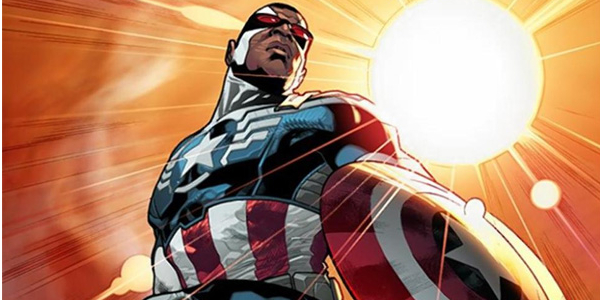
Cowl Rental is not a new phenomenon in comics, nor is Marvel’s recent announcements the first time that cowl rental has been used in mainstream superhero comics for injecting diversity into the ranks of popular superheroes. For some reason (having a lot to do with fans selectively hating everything DC ever does), geek culture seems to forget that about ten years ago, DC used the exact same tactic of cowl rental, often to try and inject racial and gender diversity into their superhero universe.
More problematically, cowl rental never ends well.
The problem with cowl rental — whether for the purposes of diversity or not — is the necessary temporariness of the act. Comics cannot abide the permanent hand-over of some cowls to new owners; they will always be seen as inauthentic or substitutes, there just to keep the cowl warm until its original owner inevitably returns. For example, there is only one Superman: Clark Kent. There is only one Batman: Bruce Wayne. In several high-profile story arcs, others have assumed the mantles, but we always knew it would never last, because fans wouldn’t tolerate permanent retirement or death of either of these characters.
So, we know that for some superheroes, the original owners of the cowl will always return, no matter the circumstances under which they give up their cowl. But, cowl rental also presents a problem: a new character has become a major superhero in a comic book universe, and the inevitable return of the cowl’s true owner requires some way for the superhero to give it back. But, there are only a few possible options for this to happen: 1) the true owner fires the successor — most true owner characters aren’t ever asshole enough to fire people ever (Batman being a notable exception, ‘cuz he just don’t give a fuck), 2) the successor quits or accepts a demotion in status — which renders irrelevant a character you’ve been told to care about as Really Fucking Important for months, or 3) something horrible happens to the successor.
And, it turns out, option #3 is what happens most often.
Time and time again, when we see cowl rental in comics, it’s followed by tragedy and horror, and often death — and yes, that horrible tragedy is usually happening to a female or non-White character.
Consider the Bat-family alone. Two men — Dick Grayson and Jean-Paul Valley — have assumed the role of Batman temporarily until the return of Bruce Wayne. Although Dick Grayson gave the cowl back willingly, Dick’s character was written as never wanting the Batman mantle and he had his own superhero alterego in Nightwing to return to. But Jean-Paul Valley? As Batman, he fucks everything up horribly; after he is summarily fired from being Batman (remember, I said Batman is the exception to “no one gets fired from the cowl” rule), he is ostracized from the Bat-family. He headlines his own book as Azrael for awhile until his untimely death.
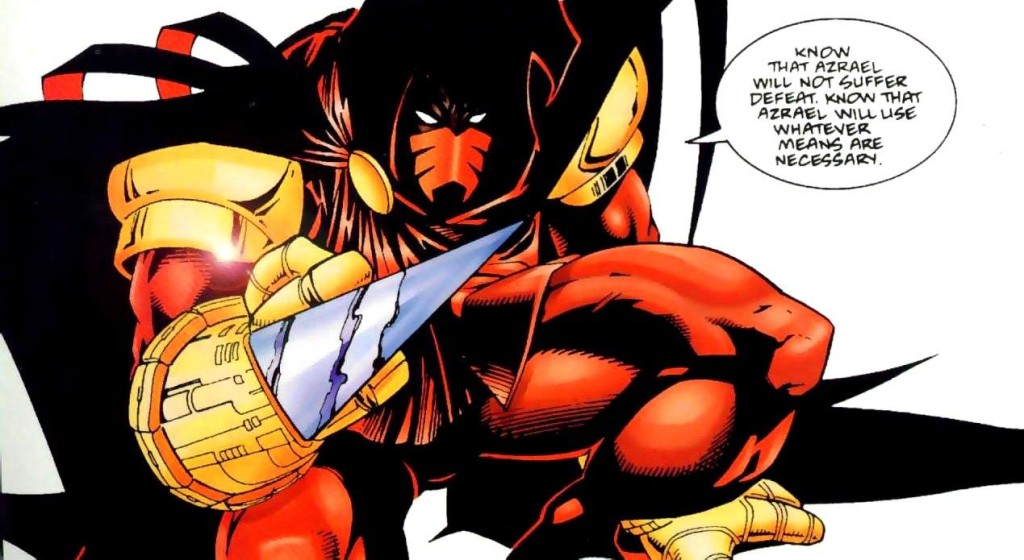
Meanwhile, three Robins have rented the cowl and summarily died. Famously, Jason Todd, the second Robin, was both considered such a pretender to the Robin mask and cape and so abjectly hated by fans, that readers clamoured for his head. DC Comics gleefully catered to the bloodlust, and Jason Todd became the first “Death in the Family”.
That is until Stephanie Brown, aka the Spoiler. DC made waves when she was hired on by Batman as the first contemporary female Robin (for some reason we don’t count Carrie Kelley); she lasted one issue and then was brutally kidnapped, tortured, (possibly) raped and murdered.
And then there was Damien Wayne, who rented the Robin cowl as the notorious son of Batman, until his recent death.

DC famously announced the first-ever Asian American Atom, then the most prominent AAPI superhero character of either comic book house. Ryan Choi rented the mantle of the Atom for nearly thirty self-titled issues of the All-New Atom (remind you of Sam Wilson’s new book where he becomes Blaptain America, anyone?), until the title was canceled due to low readership. Later, Ryan Choi was murdered and his corpse delivered to his fellow superheroes to launch the Brightest Day universe-wide crossover event to eventually make way for Ray Palmer to resume the title of Atom — it’s nothing more than a modern-day POC-in-refrigerators moment.
Renee Montoya assumed the cowl of The Question, and has been horribly disfigured for her trouble. Her former GCPD partner, Crispus Allen, holds the record for most deaths in Cowl Rental: he died once to become the new Spectre, and died again to give it up.
Of course, not all cowl rentals lead invariably to death. But they all invariably lead to bad things for the cowl renter. Both Helena Bertinelli and Cassandra Cain rented the Batgirl cowl from Barbara Gordon: both were fired (Batman never met a sidekick he wasn’t eager to fire) and kicked out of the Bat-family for good measure. Cassie Cain even became inexplicably a villain for awhile.
In the Death of Superman, four pretenders became Superman after Clark Kent’s death — the Cyborg, the Eradicator, Superboy and Steel (becoming the first, but not only, African American Superman). Two were villains, one lost his powers, and yes, one died.
Jason Rusch became one of DC’s most powerful African American superheroes when he became the new Firestorm after Ronnie Raymond. Upon Ronnie’s return, Jason suffered a serious demotion — he went from being Firestorm to the Magical Negro in Ronnie Raymond’s head.
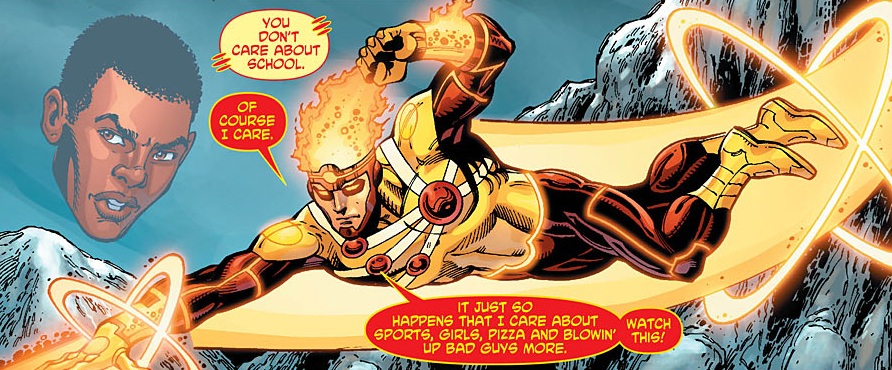
It’s true that all of my examples come from DC — that’s because Marvel has just now stumbled upon the same tactic DC has been using for years; consequently we don’t have a ton of examples of cowl rental to draw from. Yet. But, consider that the new Janet Pym (aka The Wasp) of the Ultimate Universe — who was one of the universe’s only Asian American superheroes — died a truly horrible death when she was eaten by the Blob.
There are, of course, a few examples of diversity-inspired cowl rental that have turned out okay so far. Kyle Rayner and Jon Stewart are both still alive as Green Lanterns; yet, the structure of the Green Lantern Corps permits Hal Jordan to be a Green Lantern simultaneous with his predecessors, so they don’t really have to have something horrible happen to them for Jordan to return.Over at Marvel, Miles Morales — not Peter Parker — is still the Ultimate Universe’s Spiderman; but, it remains to be seen whether or not he will be allowed to keep the cowl, or if his story just hasn’t yet played out to a horribly tragic end or not.
Taken together, I just have a really uneasy feeling over last week’s news. I’ve no particular love for Sam Wilson (or Carol Danvers, whom Snoopy Jenkins hypothesizes is the woman beneath the winged helmet); but before we get too excited here, let’s remember: we’ve seen this all before, and if history has anything to teach us, it’s that Cowl Rental never ends well for the renter of the cowl.
And, I could really do without a Colbert Report announcement next year of The Death of Blaptain America.
Semi-related: Next week, I’ll be podcasting with Snoopy on the topic of “Thinking Man” superhero and comic book movies! We’ll be asking why tackling adult themes — like race — can make a superhero or action movie unpopular. Mark your calendars and submit your questions now!
Read more: Snoopy Jenkin’s Superman is a White Boy is the Internet’s definitive essay on the inherent White supremacy of the superhero paradigm, and how this challenges most superficial efforts at racial and gender diversity. You should read it.

